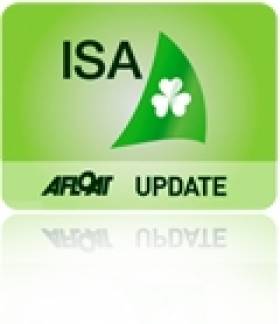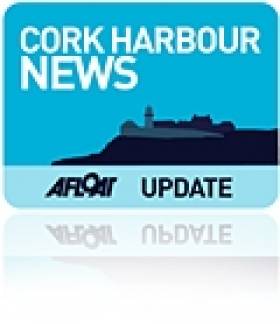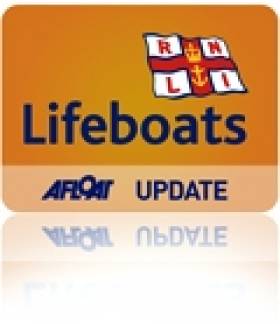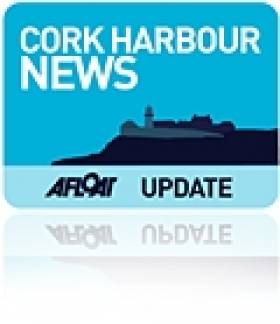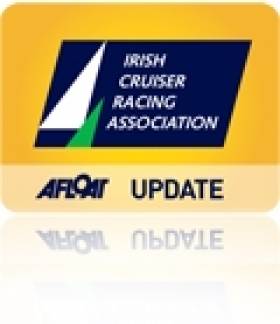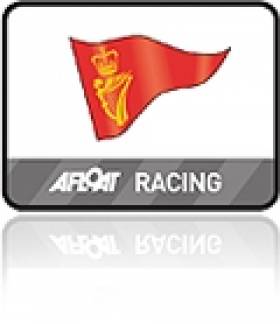Displaying items by tag: Cork Harbour
Commodores' Cup Celebration Dinner to be Held at Royal Cork
Team Ireland boats, Antix - Anthony O Leary, Marinerscove.ie - Dave Dwyer and Roxy 6 - Rob Davies and Andrew Creighton, will be represented on the night.
The dinner cost will be €30 and booking will be on first come/first served basis. Book with [email protected] or call 021 4831023.
All Ireland's Eye New Date at End of November
Following the abandonment of the Irish Sailing Association's All Ireland Sailing Championships in the last weekend of September the national authority is still seeking a suitable resail date. "Currently we're in touch with the competitors. It's looking like the end of November", Racing manager Ed Alcock told Afloat.ie this week. The event was scrubbed due to lack of wind but a junior event was completed elsewhere in Cork Harbour.
A new Notice of Race (NOR) will be published for the event. Eight helmsmen, including the double winner Nicholas O'Leary will be invited in a new final consisting of five races. The eight finallists are Anthony O'Leary, Neil Kenefick, Nicholas O'Leary, Garrett May, Niall Henry, James Espey, Nick Walsh, Ewen Barry.
Cruising Sailor Rescued off Cork Harbour
A sailor who got into difficulty cruising from Wales to the Canary Islands was rescued and brought to safety in Cork Harbour yesterday.
The 10-metre yacht hit poor weather conditions near the Pollock Rock east of Power Head and lost the use of its VHF radio. The skipper was heading for Cork Harbour when he also encountered steering problems.
A passing fishing boat lent assistance and contacted the Coastguard. The vessel was towed to Crosshaven by Ballycotton lifeboat.
Related Safety posts
RNLI Lifeboats in Ireland
Safety News
Rescue News from RNLI Lifeboats in Ireland
Coast Guard News from Ireland
Water Safety News from Ireland
Marine Casualty Investigation Board News
Marine Warnings
Crotty Stays on Top in 1720s
The sun may have been missing from the scene this morning at Crosshaven and the skies may have been dark and overcast but the wind was blowing, the buzz was very definitly in the the air and the spring was in every sailors'step as they arrived in their droves to set forth on the second day of the O'Flynn Exhams Autumn League at the Royal Cork Yacht Club writes Claire Bateman. Photos from race two on the gallery click HERE
The wind was gusting some 26 knots on the marina but by the time the boats had reached the comittee boats for the start of racing the east wind had moderated to some 10/12 knots and later went north easterly, was obviously going to provide a good day of sailing. The two Race Officers had put their minds together on the courses and decided to sail both fleets within the harbour and this proved to be an outstanding success. Race Officer David O'Brien was today on Classes Three, Four and Whitesail one and two and his boat "Sabrone" was kindly provided by Admiral Paddy McGlade who was on board for the racing. Richard Leonard's committee boat "Capta Ventum" was kindly provided by Pat Healy who was also on board to watch the day's events unfold.

Tight handling in the second day of Cork's Autumn League races. Photo: Bob Bateman. More on the gallery HERE
There are exceptionally high spring tides at the moment and this exercised the minds of the all sailors to keep out of the strong tide and on the other hand to avoid going aground on any of the banks around the harbour. In this regard the one casualty was Peter Webster's Thistle from Class Four which went aground and spent some time waiting for the incoming tide.
The tight courses and the racing tide coupled with the sufficient breeze made for close racing. John Crotty was a very happy man sailing the 1720 Two 2 Tango and winning the class for the second week in a row. Class One is of course a very competitive class and there was close racing between the 4 X332s. In Class Two it was good to see Bad Company and wicked so close together but the day in Class Two belonged to Shane Statham of Waterford Harbour in Slack Alice who ended first overall in IRC and ECHO. In Whitesail 2 Clive Doherty had an excellent day winning IRC1 and Ernie Dillon received a tumultous reception when his name was called out in the same class for wining ECHO.
The combination of the fleets racing in the magnificent harbour today added greatly to the buzz with yachts flying everywhere and the fleets moving around with the greatest of ease. Some were up off Cobh while others went to a laid mark off the Aghada shore and Whitesaill one and two were given a course which should have taken in the OFE2 buoy outside the harbour but given the fear would lighten even further race officer David O'Brien decided to shorten the course so the white sail fleets hada somewhat easy day of sailing and returned early to the warmth of the club house. It was certainly a huge success on the part of the race officers and added greatly to the enjoyment as was heard from the sailors in their apés sail get totether. There were three protests from the racing today but one was withdrawn and the other two were resolved amicably so all was well and the prize giving presided over by Aeibhín Cahalan of O'Flynn Exhams brought a fitting finish to the day.
Five Incidents in Four Days for Cork Harbour Lifeboat
Crosshaven Volunteer RNLI Lifeboat has had a very busy few days as they were tasked to five incidents in four days.
On Thursday evening at 17.59, the Lifeboat was tasked to the upper reaches of Cork Harbour near the city to check out an unidentifiable object in the water. On arrival, the object was found to be a large bag containing foam. Friday evening, saw the Lifeboat heading up the Owenabue River to rescue two punts which had been floated off on the very high Spring tides and were perceived a danger to shipping.
Saturday evening at 20.34, the Lifeboat was again tasked to the North side of Great Island where a 55' Motor Launch with 3 persons on board had mechanical difficulties and drifting in high winds of force 7. On arrival at scene, the crew decided that because of the size and weight of the vessel and the high winds it was safer to anchor the vessel and take off the crew. They were safely landed at East Ferry Pier. As the Lifeboat was returning to Crosshaven, The Coastguard at Valentia again tasked the Lifeboat to search the area between Cobh and Monkstown for an overdue Rigid Inflatable Boat (RIB). After searching for a period, and with nothing found, the Coastguard stood down the volunteer Lifeboat crew to return to station.
Sunday afternoon, and the pagers were again activated at 16.33 to go to the aid of a small boat with engine problems at East Ferry. On arrival in the area, it was noticed that the casualty boat had managed to restart and head into East Ferry Marina.
Related Safety posts
RNLI Lifeboats in Ireland
Safety News
Rescue News from RNLI Lifeboats in Ireland
Coast Guard News from Ireland
Water Safety News from Ireland
Marine Casualty Investigation Board News
Marine Warnings
Department Denies Haulbowline Report
The spokesman told RTE news there is no likelihood of fines being imposed.
He added that the notice, which was issued last week, is part of a long standing legal case being taken against Ireland relating to other waste legacy sites.
Haulbowline was mentioned because it had no waste license.
Cork Institute of Technology Win 2010 Student Yachting Nationals
Last weekend saw the Student Yachting Nationals take place at the Royal Cork Yacht Club. The students had the use of the ISA J80 Sailfleet for the event. Six college teams entered for the Nationals which was the Qualifier for the Student Yachting World Cup 2011.
Racing was scheduled for Cuskinny on Friday and conditions were ideal with 17-20 knots of breeze. Race Officer, Nathan Kirwan, got in four good races lasting some 40 to 50 minutes each. However, spinnakers were banned as some wipeouts had been observed by the ISA Bosun who exercised his judgment in this regard. Some two minutes after the start of the first race UCC skippered by Robert O'Leary suffered a snapped halyard but were refused redress. CIT skippered by George Kenefick lost their only winch handle overboard some three minutes before the start in race 1 but still managed to win the race by a comfortable margin. In race 2 UCC came back strongly to take the gun and pushing CIT into second place. At this stage match racing had begun between the two Cork colleges with each throwing dummy tacks to try to clear their air. In Race 3 TCD skippered by Alistair Kissane took the win with CIT in second and UCC third. The final race of the day was won by CIT with UCC third. Overall standings for Day One were: CIT 6pts, with UCC and TCD on 12 pts each. UCD had got off to a shaky start which was to prove costly for them as they were on form on days two and three.
On day two the Race Officer moved the course to the Curlane Bank and spinnakers were permitted. CIT found their rythym taking the bullet in race 5 with UCD in second and a poor mark rounding relegated UCC to third place. Race 6 saw the O'Leary and Kenefick teams doing circles at the pre start as the competition was intensifying and it was looking like a two horse race. UCC took first place with NUIG taking second and CIT third. Donagh Good of CIT went for a quick dip in the cold water but managed to grab on and was pulled back on board by George Kenefick and Kevin Goulding. Later during day 2 the wind was rising to 22 knots so spinnakers were once again banned. UCC found the conditions very much to their liking, taking the win, with TCD in second, UCC third and CIT fourth. Race 8 proved to be rather interesting with CIT managing to relegate UCC to last position and managing to keep UCC in their sight for the duration of the race. Downwind was difficult for CIT with UCC right on their tail but UCC were not successful in finding a passing lane. Again, UCD took their second bullet of the day with CIT and UCC in fifth and sixth positions some four to five minutes behind the rest of the fleet. CIT were able to discard their fifth position but UCC were unlucky in having to count their sixth as they also had a sixth from day one. TCD again got a second position. Results after day two were: CIT 14pts, UCC 19pts, UCD and TCD on 21pts each.
Day 3 was a non discardable coastal race from Crosshaven to Kinsale counting for 1.5pts. The start line was just off Roches Point with five knots of breeze and brilliant sunshine. UCC led the fleet and NUIG and CIT were in last position 300 metres behind the rest of the fleet. As the race went on the wind increased to a nice south westerly breeze of 12 to 14 knots. As this stage it looked as if it might be UCC's lucky day but Team CIT maintained their composure and by tacking close to the shore and keeping out of the tide managed to finish in third position at the Bulman Buoy with UCC first and UCD second. This result was to prove sufficient to give CIT the national student title for 2010.
Overall Results:
CIT 18.5pts
UCC 20.5pts
UCD 24pts
TCD 28.4pts
NUIG 33pts
UL 40pts
Salute the Cup Team at the 2010 ICRA Conference
80 Boats for Royal Cork Autumn League (PHOTOS HERE!)
An 80 boat fleet set sail for the opening day of the Autumn League at the Royal Cork Yacht Club Regatta today writes Claire Bateman.
While conditions setting out were typical of a lovely Autumn day, the wind, however, was to prove fickle going up and down changing direction. As a consequence of this Race Officer David O'Brien with the Red fleet made up a course to suit the conditions and Race Officer Richard Leonard brought the Green fleet to the Eastern bank where they were to sail a laid course. The Whitesail fleets sailed an extra leg to their race as they have decided to have only one race each day.
The Red fleet started their first race at Whitebay and went to a laid mark on the eastern shore before spinnkaers were hoisted to be dropped shortly afterwards as they headed for OFE 2 before fetching across to Ringabella and running in to a finish at no. 5. Race 2 saw a beat out to W2 for Classes Zero, One and 1720s and a run back to No.11 where the course was shortened. Shortly after the start of the race a shower came and with it some wind but when the rain stopped the wind died resulting in the shortening of the course. Class 2 were also given a beat out to W2 but they were given a shorter course finishing at No. 7.
As usual we had welcome visitors from Kinsale, Dungarvan, Waterford and Cobh participating. It was good to see Jump Juice back in the water as it also was to see Indulgence back in action again. And perhaps best of all was to see a resurgence of 1720s back on their home waters in Cork Harbour.
Prize giving took place immediately after racing and the prizes were distributed by Irene O'Donovan a Partner in the sponsor firm of O'Flynn Exhams Solicitors.
Racing will continue next Sunday with first gun at 10.55am.
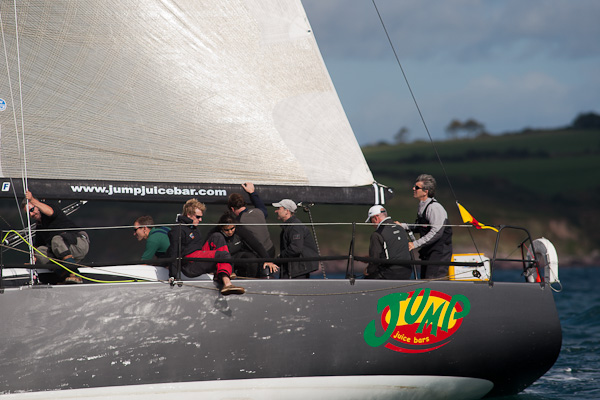
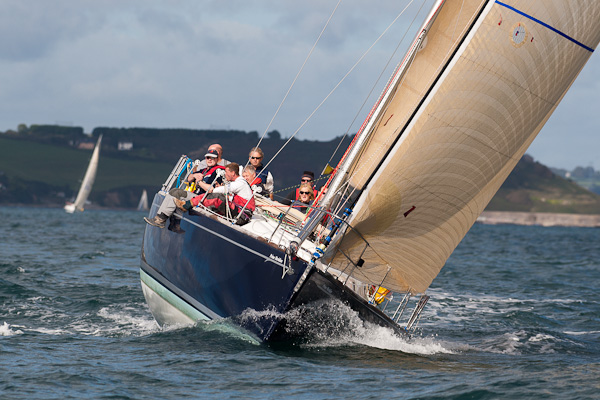

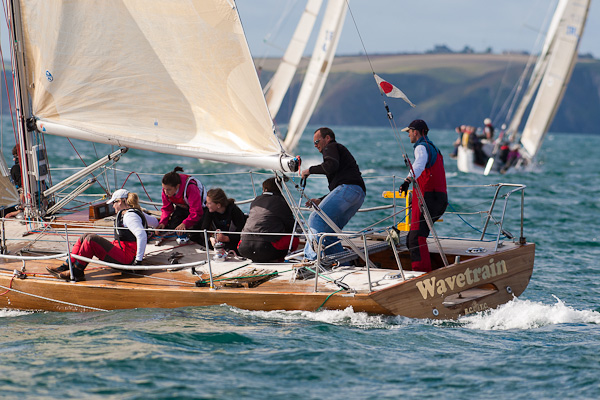

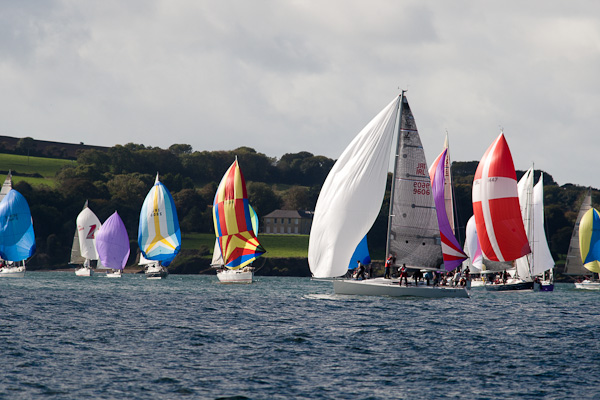
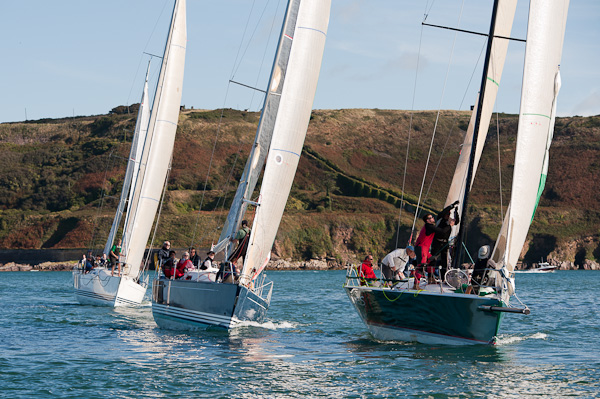

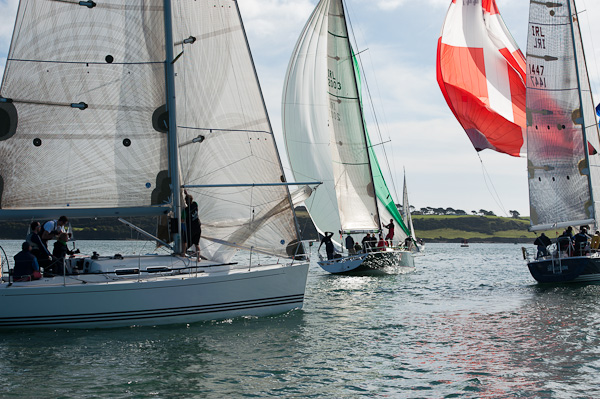

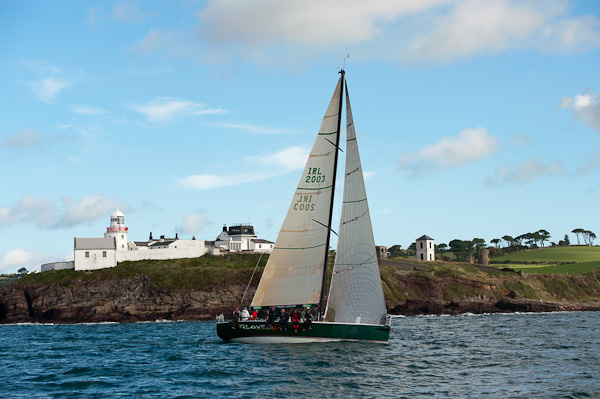
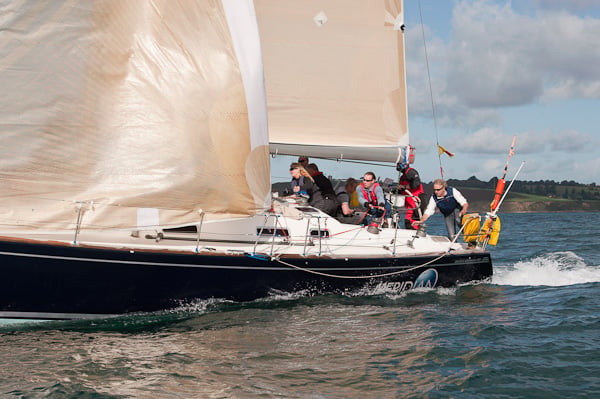
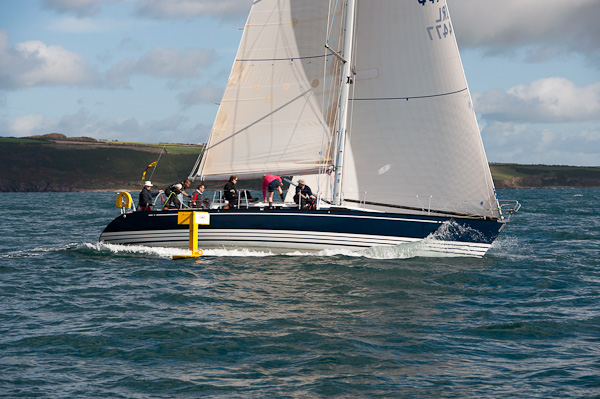
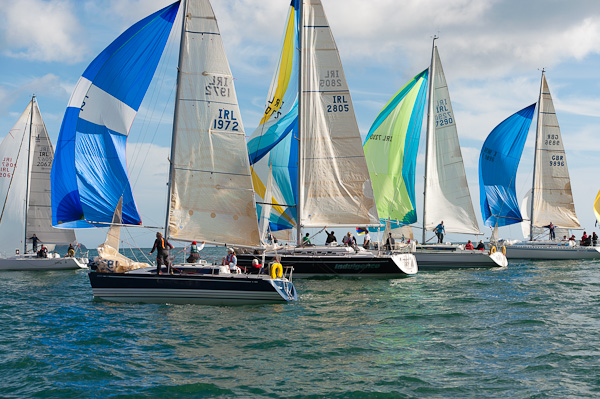

First Race Results on Royal Cork Site HERE
More Bob Bateman Photos on the Gallery HERE
Cork Harbour Fort Attracts Thousands of Visitors
Thousands of people from all over Ireland visited Fort Camden, Crosshaven during September when the fort, officially named as Fort Meagher, was open to the public for the first time.
The partnership project, which is being spearheaded by Crosshaven Tourism on behalf of the local community association, is being undertaken by Fas workers with funding from Cork County Council and the active support of Rescue Camden, local businesses and other volunteers the local community
At a reception to mark the restoration of two of its barrack rooms, County Manager Martin Riordan congratulated everyone involved. 'This is all about action by a small group with lots of energy and commitment to their own locality. There's lot of talk about what could and should be done but right now we need more bodies like Crosshaven Community Association and Tourism'.

Mr Riordan paid tribute to Fas and praised the staff in the county council who put so much work into the project over many years, including former chief planning officer Brendan Kelleher. He concluded by saying that there had to date, been a tremendous return for a relatively small investment.
Congratulations were also extended by Cllr John A Collins who said it was a landmark day and the start of a bright new beginning for Fort Camden. The fact that on the day he visited during September, he heard so many non-Irish accents confirmed its exciting potential as a military heritage, tourism and arts attraction.
Paul Brierley, chairman of Crosshaven Tourism said the opening of the first two rooms to be restored was a day of celebration. He spoke of the tremendous voluntary ethos and goodwill and believed the project would be 'a template for the county'
He thanked the county manager 'for allowing us a sense of community ownership, his belief in our ability to deliver, his support thus far' and applauded him for 'a shared vision of realizing the tourism potential of Cork Harbour of which there can be no doubt Fort Camden and indeed Crosshaven will have a huge role to play'.
'We have opened the gates to what we feel will be the 'jewel in the crown' of Cork Harbour and Crosshaven, one of the finest remaining classic artillery forts in the world named after one of the most famous men in Ireland, Thomas Francis Meagher', said Paul who urged people to continue supporting the project and visit the website www.rescuecamdenm
Further works are ongoing and it is hoped to again re-open to the public Fort Camden on a temporary basis in March.

Pictured at the reception (from left) Cllr Paula Desmond, County Manager Martin Riordan, Cllr Deirdre Forde, Simon Coveney TD, Deputy Mayor of County Cork Cllr John A Collins and Cllr Seamus McGrath.



























